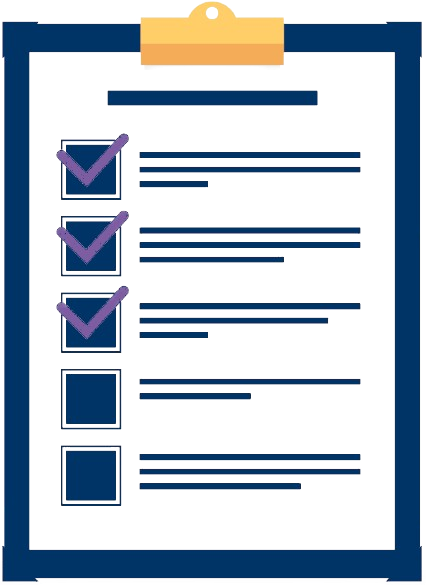Suggestions based on the Question and Answer that you are currently viewing
Try to formulate a definition of ‘the public interest’.
Aamodt Music sold CDs to retailers and recorded sales revenue of $700,000. During 2014, retailers returned CDs to Aamodt and were granted credit of $78,000. Past experience indicates that the normal return rate is 15%. Prepare Aamodt’s entries to record (a) the $78,000 of returns and (b) estimated returns at December 31, 2014.
What are the general physical properties of ceramic materials?
Under what circumstances would a rightward shift in the DAD curve lead to a permanent increase in real national income?
According to the video on composites, list the primary purpose of the matrix and the reinforcement in a composite.
On October 1, 2014, Arden Farm Equipment Company sold a pecan-harvesting machine to Valco Brothers Farm, Inc. In lieu of a cash payment Valco Brothers Farm gave Arden a 2-year, $120,000, 8% note (a realistic rate of interest for a note of this type). The note required interest to be paid annually on October 1. Arden’s financial statements are prepared on a calendar-year basis. Instructions Assuming Valco Brothers Farm fulfills all the terms of the note, prepare the necessary journal entries for Arden Farm Equipment Company for the entire term of the note.
The foreman in the pressworking section comes to you with the problem of a blanking operation that is producing parts with excessive burrs. (a) What are the possible reasons for the burrs, and (b) what can be done to correct the condition?
Rick Kleckner Corporation recorded a finance lease at $300,000 on January 1, 2014. The interest rate is 12%. Kleckner Corporation made the first lease payment of $53,920 on January 1, 2014. The lease requires eight annual payments. The equipment has a useful life of 8 years with no residual value. Prepare Kleckner Corporation’s December 31, 2014, adjusting entries.
Discuss the different types of budget variances that can be calculated.
Under what circumstances would a rise in income tax act as (a) a disincentive and (b) an incentive to effort?
This year Diane intends to file a married filing jointly return. Diane received $197,500 of salary and paid $5,000 of interest on loans used to pay qualified tuition costs for her dependent daughter, Deb. This year Diane has also paid moving expenses of $4,300 and $28,300 of alimony to her ex-spouse, Jack, who she divorced in 2013. a. What is Diane’s adjusted gross income? b. Suppose that Diane also reported income of $8,800 from a half share of profits from a partnership. Disregard any potential self-employment taxes on this income. What AGI would Diane report under these circumstances?
Green Day Hardware Company’s payroll for November 2014 is summarized below. Amount Subject to Payroll Taxes Unemployment Tax Payroll Wages Due FICA Federal State Factory $120,000 $120,000 $40,000 $40,000 Sales 32,000 32,000 4,000 4,000 Administrative 36,000 36,000 — — Total $188,000 $188,000 $44,000 $44,000 At this point in the year, some employees have already received wages in excess of those to which payroll taxes apply. Assume that the state unemployment tax is 2.5%. The FICA rate is 7.65% on an employee’s wages to $113,700 and 1.45% in excess of $113,700. Of the $188,000 wages subject to FICA tax, $20,000 of the sales wages is in excess of $113,700. Federal unemployment tax rate is 0.8% after credits. Income tax withheld amounts to $16,000 for factory, $7,000 for sales, and $6,000 for administrative. Instructions (a) Prepare a schedule showing the employer’s total cost of wages for November by function. (Round allcomputations to nearest dollar.) (b) Prepare the journal entries to record the factory, sales, and administrative payrolls including the employer’s payroll taxes.
Describe the sequence of steps in the cycle of a resistance spot-welding operation.
Why might a company choose not to use revaluation accounting?
Brad Dolan, a stockholder of Rhode Corporation, has asked you, the firm’s accountant, to explain why his stock warrants were not included in diluted EPS. In order to explain this situation, you must briefly explain what dilutive securities are, why they are included in the EPS calculation, and why some securities are antidilutive and thus not included in this calculation. Rhode Corporation earned $228,000 during the period, when it had an average of 100,000 shares of common stock outstanding. The common stock sold at an average market price of $25 per share during the period. Also outstanding were 30,000 warrants that could be exercised to purchase one share of common stock at $30 per warrant. Instructions Write Mr. Dolan a 1–1.5-page letter explaining why the warrants are not included in the calculation.
Peter M. Dell Co. purchased equipment for $510,000 which was estimated to have a useful life of 10 years with a salvage value of $10,000 at the end of that time. Depreciation has been entered for 7 years on a straight-line basis. In 2015, it is determined that the total estimated life should be 15 years with a salvage value of $5,000 at the end of that time. Instructions (a) Prepare the entry (if any) to correct the prior years’ depreciation. (b) Prepare the entry to record depreciation for 2015.
Goring Dairy leases its milking equipment from King Finance Company under the following lease terms. 1. The lease term is 10 years, noncancelable, and requires equal rental payments of $30,300 due at the beginning of each year starting January 1, 2014. 2. The equipment has a fair value and cost at the inception of the lease (January 1, 2014) of $220,404, an estimated economic life of 10 years, and a residual value (which is guaranteed by Goring Dairy) of $20,000. 3. The lease contains no renewable options, and the equipment reverts to King Finance Company upon termination of the lease. 4. Goring Dairy’s incremental borrowing rate is 9% per year. The implicit rate is also 9%. 5. Goring Dairy depreciates similar equipment that it owns on a straight-line basis. 6. Collectibility of the payments is reasonably predictable, and there are no important uncertainties surrounding the costs yet to be incurred by the lessor. Instructions (a) Evaluate the criteria for classification of the lease, and describe the nature of the lease. In general, discuss how the lessee and lessor should account for the lease transaction. (b) Prepare the journal entries for the lessee and lessor at January 1, 2014, and December 31, 2014 (the lessee’s and lessor’s year-end). Assume no reversing entries. (c) What would have been the amount capitalized by the lessee upon the inception of the lease if: (1) The residual value of $20,000 had been guaranteed by a third party, not the lessee? (2) The residual value of $20,000 had not been guaranteed at all? (d) On the lessor’s books, what would be the amount recorded as the Net Investment (Lease Receivable) at the inception of the lease, assuming: (1) The residual value of $20,000 had been guaranteed by a third party? (2) The residual value of $20,000 had not been guaranteed at all? (e) Suppose the useful life of the milking equipment is 20 years. How large would the residual value have to be at the end of 10 years in order for the lessee to qualify for the operating method? (Assume that the residual value would be guaranteed by a third party.) (Hint: The lessee’s annual payments will be appropriately reduced as the residual value increases.)
Using a diagram similar to Figure 7.6 to derive a long-run market supply curve for (a) a constant- cost industry and (b) a decreasing-cost industry.
Luke sold a building and the land on which the building sits to his wholly owned corporation, Studemont Corp., at fair market value. The fair market value of the building was determined to be $325,000; Luke built the building several years ago at a cost of $200,000. Luke had claimed $45,000 of depreciation on the building. The fair market value of the land was determined to be $210,000 at the time of the sale; Luke purchased the land many years ago for $130,000. a. What are the amount and character of Luke’s recognized gain or loss on the building? b. What are the amount and character of Luke’s recognized gain or loss on the land?
A recent financial magazine indicated that the airline industry has poor financial flexibility. What is meant by financial flexibility, and why is it important?
The total solidification times of three casting shapes are to be compared: (1) a sphere with diameter = 10 cm, (2) a cylinder with diameter and length both = 10 cm, and (3) a cube with each side = 10 cm. The same casting alloy is used in the three cases. (a) Determine the relative solidification times for each geometry. (b) Based on the results of part (a), which geometric element would make the best riser? (c) If the mold constant = 3.5 min/cm2 in Chvorinov's rule, compute the total solidification time for each casting.
Explain the difference between pretax financial income and taxable income.
1. : Walt Disney Company has four major strategic business units: movies (including Pixar and Touchstone), theme parks (Walt Disney World and Disneyland), consumer products (the Disney Store), and television (the ABC/Disney Television Group and ESPN). Place each of these SBUs on the BCG matrix based on your knowledge of them.
A three-axis CNC machining center is tended by a worker who loads and unloads parts between machining cycles. The machining cycle takes 5.75 min, and the worker takes 2.80 min using a hoist to unload the part just completed and load and fixture the next part onto the machine worktable. A proposal has been made to install a two-position pallet shuttle at the machine so that the worker and the machine tool can perform their respective tasks simultaneously rather than sequentially. The pallet shuttle would transfer the parts between the machine worktable and the load/unload station in 15 sec. Determine (a) the current cycle time for the operation and (b) the cycle time if the proposal is implemented. What is the percentage increase in hourly production rate that would result from using the pallet shuttle?
What is a product financing arrangement? How should product financing arrangements be reported in the financial statements?
The benefits of buying with AnswerDone:

Access to High-Quality Documents
Our platform features a wide range of meticulously curated documents, from solved assignments and research papers to detailed study guides. Each document is reviewed to ensure it meets our high standards, giving you access to reliable and high-quality resources.

Easy and Secure Transactions
We prioritize your security. Our platform uses advanced encryption technology to protect your personal and financial information. Buying with AnswerDone means you can make transactions with confidence, knowing that your data is secure

Instant Access
Once you make a purchase, you’ll have immediate access to your documents. No waiting periods or delays—just instant delivery of the resources you need to succeed.
